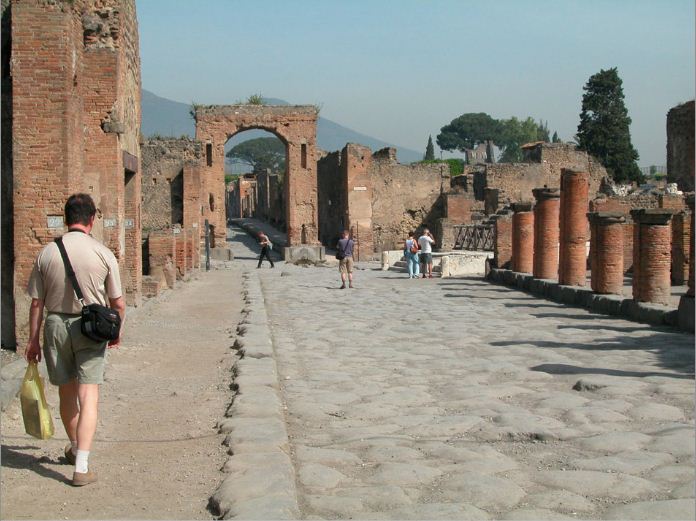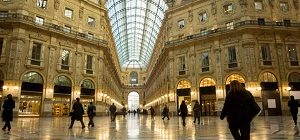Are you planning on visiting Pompeii on your next holiday to Italy? Would you like to know what the highlights of a visit to Pompeii include? Our sightseeing guide to Pompeii gives you the facts & information you’ll want to know.
The modern town of Pompeii is a tiny place located on the south west shores of Italy with a population of less than 30,000. However, because of the extraordinary archaeological site of ancient Roman Pompeii that is located nearby, millions of visitors come to Pompeii every year. The ruins of Pompeii are among the most extensive and well preserved in the world due to the fact that they were buried in ash from the fallout of the nearby volcano known as Mount Vesuvius in 79AD.
Admission to Pompeii
Admission to the ancient city of Pompeii costs €10 which gives you access to most places inside the city. The main entrance to the ruins is from the Porta Marina which used to be where the shoreline was, although it is now more than a kilometre inland due to land reclaimed from the Volcano eruptions. Depending on how seriously you want to take your visit to the ruins at Pompeii you may want to invest in an audio guide which is available in English from the entrance and costs €6.50. This guide will provide you with all the information you’ll want to know about the various sites inside Pompeii.
Opening Time at Pompeii
Opening times at Pompeii are from 8.30am until 5pm. During the summer months when the days are longer and more tourists tend to visit Pompeii then the opening hours are extended until 7.30pm.
Temples in Pompeii
The ancient Romans prayed to several deities which is why there are various temples located throughout the city of Pompeii each dedicated to a different god. The temple of Apollo is believed to be the oldest surviving temple in Pompeii while the temples to the gods Venus and Jupiter are probably the best preserved.
Theatres in Pompeii
The ancient Romans used to love entertainment and citizens of Pompeii were no exception. Theatre was probably the most popular form of entertainment in ancient Roman times and the main theatre in Pompeii is still intact today. The theatre can hold up to 5,000 people while the amphitheatre which was used for gladiator matches has a capacity of up to 20,000.
Art in Pompeii
Although there would have been plenty of art visible in Pompeii when it was still inhabited, relatively little has survived until today. One exception is a fresco painted on the dining room wall of a private residence which is known as the Dionyisone Frieze. In addition there are various mosaics and statues to be found around Pompeii that are still in tact.





